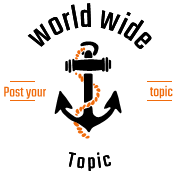UV and ozone disinfection processes have a lot of applications. For example, treating drinking water using ozone provides colourless crystal clear water. UV, ozone, and AOP-based processes are used in soil remediation, wastewater treatment and so on. For labs and healthcare, the purification of water ranges from sterile services or renal dialysis to DNA sequencing and glassware washing.
Countless municipal applications
UV reactors and ozone generators are specially designed so that they can be easily integrated into different types of treatment with the minimum amount of time and work. Depending on the application, you can get either a single technology or a multi-process method to achieve your desired result.
Removing colour
Due to organic molecules in colour, colour breaks down when it comes into contact with ozone. The oxidation potential of ozone has made the process of removing colour one of the classic applications for drinking along with odour removal and taste which are also organic. This need has come to water treatment and today ozone is typically used to remove colour effluents from textile mills, dye manufacturers, pharmaceutical, factories and other industrial firms.
Also, ozone is used as a bleach in different processes such as paper manufacturing and pulp industries, textiles and kaolin production. You can get a wide range of ozone products such as lab-scale ozonators and large engineered plants to satisfy the possible removal of colour.
Disinfection
A water solutions company can use UV and ozone methods to disinfect water in municipal and industrial applications. Each of these methods can be used to inactivate viruses. UV disinfection is a proven affordable disinfection alternative for wastewater and water, as well as different industrial applications. There are several UV products for wastewater and water treatment that are bioassay validated. In addition to disinfection, ozone treatment can also be used for taste, colour and odour removal. It can also be used to reduce manganese and iron from water. UV and ozone are effective methods. They are also environmentally friendly alternatives to chemical water treatment methods such as using chlorine.
Drinking water
UV and ozone are recognised methods for treating municipal drinking water. Each method can be used to inactivate bacteria, viruses and other micro-organisms in water. While UV can only be used to disinfect water, ozone is also an effective treatment method for odour, taste and colour removal. It can also be used to reduce manganese and iron. UV and/or ozone require short residence times for water disinfection, unlike chemicals such as chlorine.
Drinking water is treated to inactivate pathogenic micro-organisms such as bacteria, parasites and viruses to remove inorganic trace contaminants which may have found their way into the water because of pollution. They can also be used to remove naturally occurring organic compounds such as algal metabolites and acids.
Wastewater
UV water disinfection can be used to treat complex industrial wastewater due to its strong oxidation. When combined with medium-pressure UV, ozone has the power of advanced oxidation to reduce TOC as well as destroy organics. Industries that can benefit from UV and ozone include textiles, pharmaceuticals, foundry and automotive.

